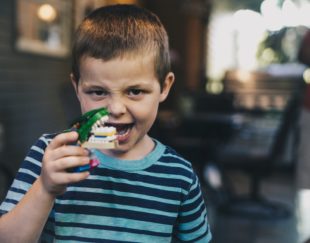10 Signs of Bipolar in Children and Teens
Christian Counselor Spokane
The average child experiences a wide range of emotions throughout childhood with a dramatic shift during the teen years. But, how do you know if what your child is experiencing is a normal part of growing up or the start of a much more serious behavior? Bipolar in children and teens manifests itself as severe mood swings. These typically appear in teens, mostly middle-school age and older, but can begin in younger children.
The majority of cases are diagnosed during an individual’s young adult years. However, knowing the signs of bipolar in children and teens can help pinpoint if, or when, you need to ask for professional help.
What is Bipolar Disorder?
 Bipolar disorder is a mental health disorder that affects how an individual handles their emotions. The person swings between high-manic states of happiness, silliness, and extreme energy to low-depressive states of disinterest, fatigue, and possible suicidal thoughts.
Bipolar disorder is a mental health disorder that affects how an individual handles their emotions. The person swings between high-manic states of happiness, silliness, and extreme energy to low-depressive states of disinterest, fatigue, and possible suicidal thoughts.
During the time between manic and depressive episodes, the person resumes their normal routine. These “normal” routines can last for weeks, months, or years before another episode returns. However, in some children, manic and depressive episodes can occur back-to-back. You may have heard of bipolar disorder referred to as manic depression due to the pattern of “high-highs” and “low-lows.”
The cause for the mental health disorder is still unclear. Stress and trauma may play a role in some cases, but certainly not all. Although there is currently not a brain scan or test that can determine bipolar in children, researchers are working to uncover if there are small differences in the activation and brain functions between a patient with bipolar disorder and a patient with no history of mental illness.
And according to researchers, if one parent has bipolar disorder, their child may not be destined to exhibit the illness, even though they are at a higher risk.
10 Signs of Bipolar in Children and Teens
All children are different in how they process emotions, however, there are 10 signs of bipolar disorder that may help you identify an issue. If you believe your child is suffering from bipolar disorder, seek the counsel of a professional mental health professional.
 Your child experiences extreme mood swings in episodes. If your child demonstrates an overly happy behavior beyond what is considered appropriate, they may be experiencing a manic episode. On the other hand, if your child seems deeply depressed in a situation that doesn’t warrant that behavior, they may be in a depressive episode. When the episode ends, children typically revert to their normal behavior until the next manic or depressive episode hits.
Your child experiences extreme mood swings in episodes. If your child demonstrates an overly happy behavior beyond what is considered appropriate, they may be experiencing a manic episode. On the other hand, if your child seems deeply depressed in a situation that doesn’t warrant that behavior, they may be in a depressive episode. When the episode ends, children typically revert to their normal behavior until the next manic or depressive episode hits.
- Your child begins consuming too much or too little food. Bipolar in teens may lead to abnormal eating patterns. Depending on whether they are in the manic or depressive end of the spectrum, your child may lose complete interest in eating and lose weight. Or, your child may show a hearty appetite that results in weight gain. Anorexia, bulimia, binge-eating and other eating disorders may appear during this time.
- Your child may physically demonstrate uncontrolled anger over small things or lose their temper very easily. Manic episodes can cause children to adopt sudden anger with no way to appropriately control their emotion. Younger children may not process the emotion as well as an older teen.
- Your child may lose interest in playing with others or with their toys. It’s not uncommon for bipolar in children to cause them to lose interest in activities that were once fun. They may avoid playing with their friends or show a disinterest in games. Many children with bipolar have trouble sticking with a routine (including hygiene or homework) during a depressive episode.
- Your child may display abnormal sleeping patterns. Depending on the episode, your child may sleep too much to the point of worry. Or, on the opposite spectrum, they may sleep very little and appear high strung and overly anxious.
- Your child may experience more tummy aches and headaches than normal. Children may have a difficult time communicating feeling “off” and may feel anxiety or interpret the emotion as pain. This can cause your child to complain of headaches, stomach aches, and other physical ailments. This especially noticeable in smaller children or teens with limited communication skills.
- Your child may speak rapidly and bounce between thoughts. A child in a manic state will try to communicate several thoughts at once within a discussion. This can lead to rapid speech and a lack of focus.
- Your child may indulge in risky behaviors. Bipolar in teens can manifest in risky behaviors including shoplifting, driving too fast, uncontrolled spending, or a preoccupation with sex. These behaviors can place a strain on family dynamics or ruin your child’s friendships.
- Your child may experience overwhelming sadness. This sadness feels hopeless. Those children in an extreme depressive state may exhibit suicidal behaviors. They may voice any suicidal thoughts out loud to a friend or write them in a journal during the episode.
- Your child may imbibe in mind-altering substances to pull themselves out of an episode. Teens with bipolar tendencies may try illicit drugs or alcohol to help them cope with their emotions and to “hide” an episode for fear that it will ruin relationships with their friends and family. Children on prescription medications, especially controlled substances, may take more than the physician prescribed.
Types of Bipolar Disorder
Before beginning treatment, your child’s physician should rule out any physical illness, attention-deficit hyperactivity disorder (ADHD), anxiety disorders, and other reasons for disruptive or depressed behavior. If the child is in the foster care system, the doctor may need to rule out any factors of abuse or neglect, depending on the situation.
 The physician may use blood tests and brain scans to prove the likelihood of bipolar disorder compared to another illness. Sometimes the child is diagnosed with one out of four types of bipolar disorder based on the Diagnostic and Statistical Manual of Mental Disorders: Bipolar I Disorder, Bipolar II Disorder, Cyclothymic Disorder, or Bipolar Disorder, unspecified.
The physician may use blood tests and brain scans to prove the likelihood of bipolar disorder compared to another illness. Sometimes the child is diagnosed with one out of four types of bipolar disorder based on the Diagnostic and Statistical Manual of Mental Disorders: Bipolar I Disorder, Bipolar II Disorder, Cyclothymic Disorder, or Bipolar Disorder, unspecified.
If your child has experienced at least one manic episode that lasted for at least a week or the child was hospitalized due to a manic/depressive state, they may be diagnosed with Bipolar I Disorder. According to the manual, your child may not experience much of a depressive episode with this type. Bipolar II Disorder patients tend to experience more severe depressive episodes with lower manic states.
Bipolar in teens that last for two years and move chronically between depressive episodes and a lower manic state are diagnosed with Cyclothymic Disorder. This type runs in cycles, although your child may experience “normal” states with no bipolar symptoms that last for a short time period. Bipolar Disorder, unspecified includes any mild to severe bipolar behavior outside of the typical three types.
The Bipolar types listed above are not meant to “label” your child, but simply to help categorize the type of care needed based on the severity and frequency of bipolar episodes.
Treatment for Bipolar in Children and Teens
 It’s important to find a professional and ethical treatment team to help your child if they are diagnosed with bipolar disorder. Since children are still developing coping skills, a plan of care which includes counseling can make a difference in how a child responds, especially during an episode.
It’s important to find a professional and ethical treatment team to help your child if they are diagnosed with bipolar disorder. Since children are still developing coping skills, a plan of care which includes counseling can make a difference in how a child responds, especially during an episode.
Christian counseling for bipolar disorder can help with relationships, communication, routines, and behavior modification. Bipolar disorder can take a toll on a family, so many treatment plans include family counseling to help all involved with the child.
Choosing a faith-based counseling team will promote spiritual growth, which helps to change the focus from self to serving others. Teaching a child to rely on their faith and pray or meditate can calm their manic-state mind, and provide peace to a child caught in the depressive state.
You can help by learning to recognize the onset of a manic or depressive episode. Strive to work closely with your child’s mental health treatment team. Communicating hope in the midst of a bipolar episode can help turn your child’s prognosis around.
If you’d like support as you work through the ramifications of bipolar disorder, feel free to contact one of the counselors in the counselor directory above.
“Rrrrrawr!”, Courtesy of Eddie Kopp, Unsplash.com, CC0 License; “Let me be frank…”, Courtesy of Christian Ferrer, Unsplash.com, CC0 License; “A Study in Red”, Courtesy of Deepak Mahajan, Unsplash.com, CC0 License; “Chillin on the Rooftop”, Courtesy of Aldo Delara, Unsplash.com, CC0 License





